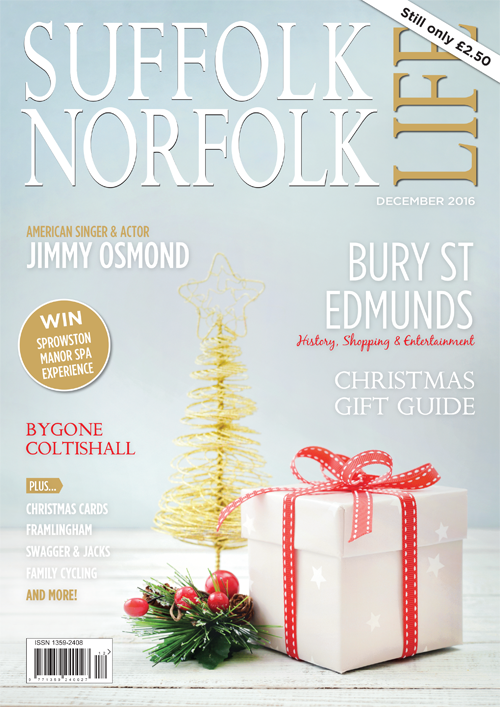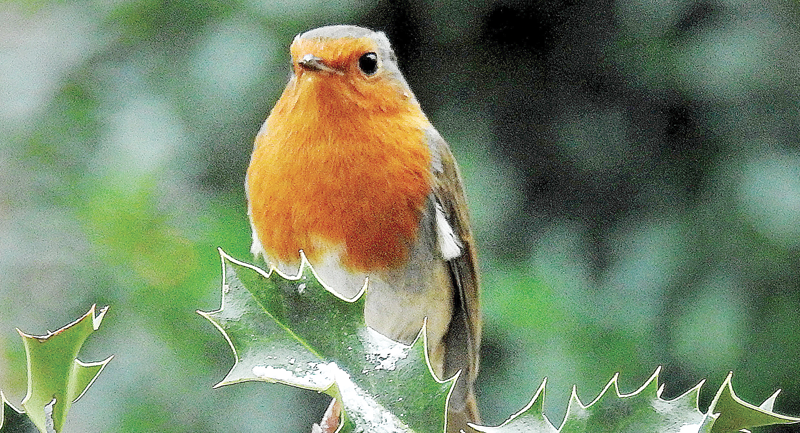- A feature from the December 2016 issue of Suffolk Norfolk Life magazine
 Click to view this issue »
Click to view this issue » - Category
- Nature
By Russell Edwards
Christmas had come and gone. It was January and the winter was mild. The birds, goldfinch, greenfinch, chaffinch, blue tit, great tit, long tailed tit, coal tit and a robin were making good use of the bird feeders. Soon the robin was accompanied by another at the feeder and from time to time they were seen together in the garden. They had formed a pair; otherwise the resident robin would have driven the intruder away.
The male robin has its own particular territory which it claims as its own and scares off any intruder with song and aggressive display. In late December and early January female robins come looking for a mate and will enter a likely male’s territory. After a few scuffles the robins will form a pair and this is what happened in my garden. It is always the female who choses the male. Later that month a third robin did enter the garden but the resident robin’s threatening display soon drove the intruder away.
Perched on the top of a low bush the robin adopted an aggressive stance, its head and tail directed towards the sky while it stretched its red breast as wide as possible and directed it towards the intruding robin, which soon fled.
St Valentine’s Day is the traditional time for a robin to find its mate but our couple had found each other much earlier.
Sometime during March I was standing in the doorway of our potting shed when I noticed the robin sitting nearby with its beak stuffed with vegetation. It stayed still until I moved away from the shed, when it flew through the doorway and started building a nest in a crevice within the shed. Only the female robin builds the nest, mainly with dried leaves and moss.

